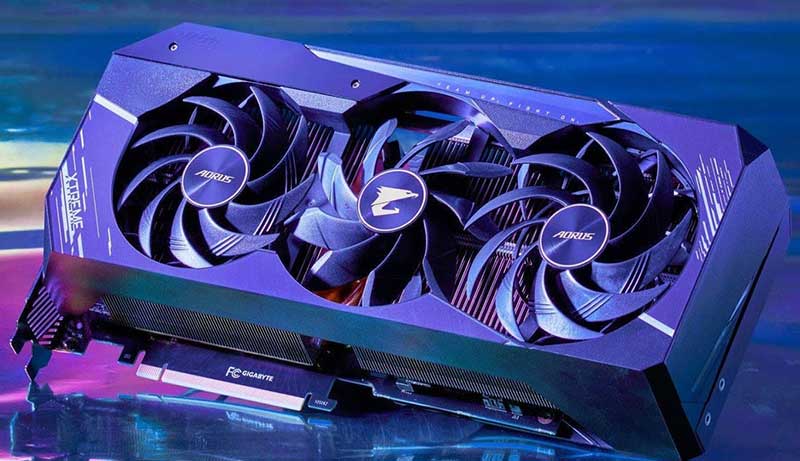by Lindsey Carter
Installing an advanced and powerful graphics card can up your gaming experience significantly. And to get the most of your graphics card, you need to employ an equally sophisticated GPU mounting system.
As exciting as the installation of a new graphics card is, it can have adverse effects on your system if it is not done correctly. Hence, you need to mount your GPU in a way that gives you the utmost benefit.
There are two well-known ways to mount GPU: horizontal and vertical. Horizontal mounting is a simple and rather old method. Whereas vertical mounting is a new and innovative method of installation.
Both mountings are significantly different from each other. They have their own regulations and conveniences. You can choose the method that is more fitted for you by distinguishing these attributes.
Contents

Here is an analysis of the vertical and horizontal GPU mount to help you identify the differences between them more distinctly.
Let us start with horizontal mount as it is the traditional position for GPU. In horizontal GPU mount, the front side of the GPU including the fan faces downwards.
This classic mounting position has been tried and tested many times over the years. It is known for giving top notch security.
The graphics card is not stationed against the side panel. Thus, it does not block other parts of the PC and allows sufficient airflow within the casing.
Besides, the cooling fans of the GPU are facing the bottom of the case in this mounting. So, an adequate amount of air is produced and it flows across the components.
When sufficient air passes around the case, the internal temperature remains low. As a result, you can enjoy better performance even while overclocking. This also ensures longevity and greater endurance in the long run.
Another great advantage of installing your GPU horizontally is that it is extremely straightforward. There are no complicated steps or tools required in this method. You also won’t need any mounting or riser cable. This saves you from additional hassles or expenses.
Despite all the conveniences, there are some factors that might be unfavorable.
Horizontal GPU Mount priorities its functions far more than its looks. Hence, it is not aesthetically pleasing unless you install a really expensive or custom-made backplate.
The most attractive part of your GPU, the fans, is facing downward in this mount. So, the only thing that you can see is the plain backplate of your casing.
Besides, many traditionally mounted GPUs do not have the space to install a support bracket. So there is nothing to carry the weight of your graphics card and your GPU will tend to sag upon installation.
In the vertical GPU mount, the GPU is parallel to the side panel. The front side of the GPU face the side casing.
This is a rather new method of installing GPU. But within a short time it has gained popularity among many PC users with a variety of models in the market.
The most favorite attribute of the vertical mount is the aesthetic appeal it provides. The entirety of the GPU faces the side panel. And this includes the fancy looking fans as well.
Nowadays, many GPU come with RGB settings. The vertical mount showcases your GPU in all of its attractively lighted glory, boosting the look of your PC ten folds. All you need is a good quality riser cable to install it.
A good quality PC and graphics card can be expensive. And let us not forget the amount of work that goes in placing it up. Putting up a vertical GPU mount is the ideal way to show off your gorgeous custom setting.
Unlike the horizontal layout, the vertical mount lets you install support brackets to bear the weight of your graphics card. This will prevent your GPU from sagging in the long run.
Since the fans of the GPU are pressed against the side panel in vertical mount, airflow is often restricted within the case. Hence, you can opt for a liquid cooling graphics card rather than an air cooling graphics card.
The liquid cooling has a water block system that cools the entire GPU system down. This also aids in overclocking and regulates the temperature at all times. Hence, it ensures the longevity and performance of the system by giving a significant boost to your FPS.
This cooling system can be used in any GPU mounting position. However, the entire process of water cooling is a treat to watch. You can also put it on display for others to watch. And this can be accomplished in vertical mounting alone.
As fascinating as the vertical GPU mount is, there are some drawbacks to it as well.
In the vertical mount, your GPU is pressed closely to the side panel. Undoubtedly this makes the GPU aesthetically appealing. But it leaves very little space between the fans and the glass case. Hence this creates a blockage for other parts and restricts airflow.
Thus, air cooling will not be sufficient for your graphics card. Your GPU will be prone to overheating very quickly unless you use a water cooling system, which can be quite expensive.
So it is also not ideal for overclocking. As it can overheat certain parts of your PC very quickly. And overheating will decrease the performance of your PC. This can also eventually harm the health of your computer and compromise its longevity.
A good quality riser cable is required to install the vertical GPU mount. And you should invest in a good quality cooling system to ensure the endurance of your PC. This may turn out to be expensive in the long run.
Each product is accompanied with its own pros and cons. So it is hard to decide a victor among them. However, both will provide top notch function. Hence, you can choose your mounting system depending on your preferences, priorities and budget.

About Lindsey Carter
Lindsey and Mike C. grew up in the same neighborhood. They also went to the same Cholla Middle School together. The two famillies from time to time got together for BBQ parties...
Lindsey's family relocated to California after middle school. They occasiotnally emailed each other to update what's going on in their lives.
She received Software Engineering degree from U.C. San Francisco. While looking for work, she was guided by Mike for an engineering position at the company Mike is working for. Upon passing the job interview, Lindsey was so happy as now she could finally be back to where she'd like to grow old with.
Lindset occasionally guest posted for Mike, adding other flavors to the site while helping diverse his over-passion for baseball.
 |
 |
 |
 |
Today's Deals